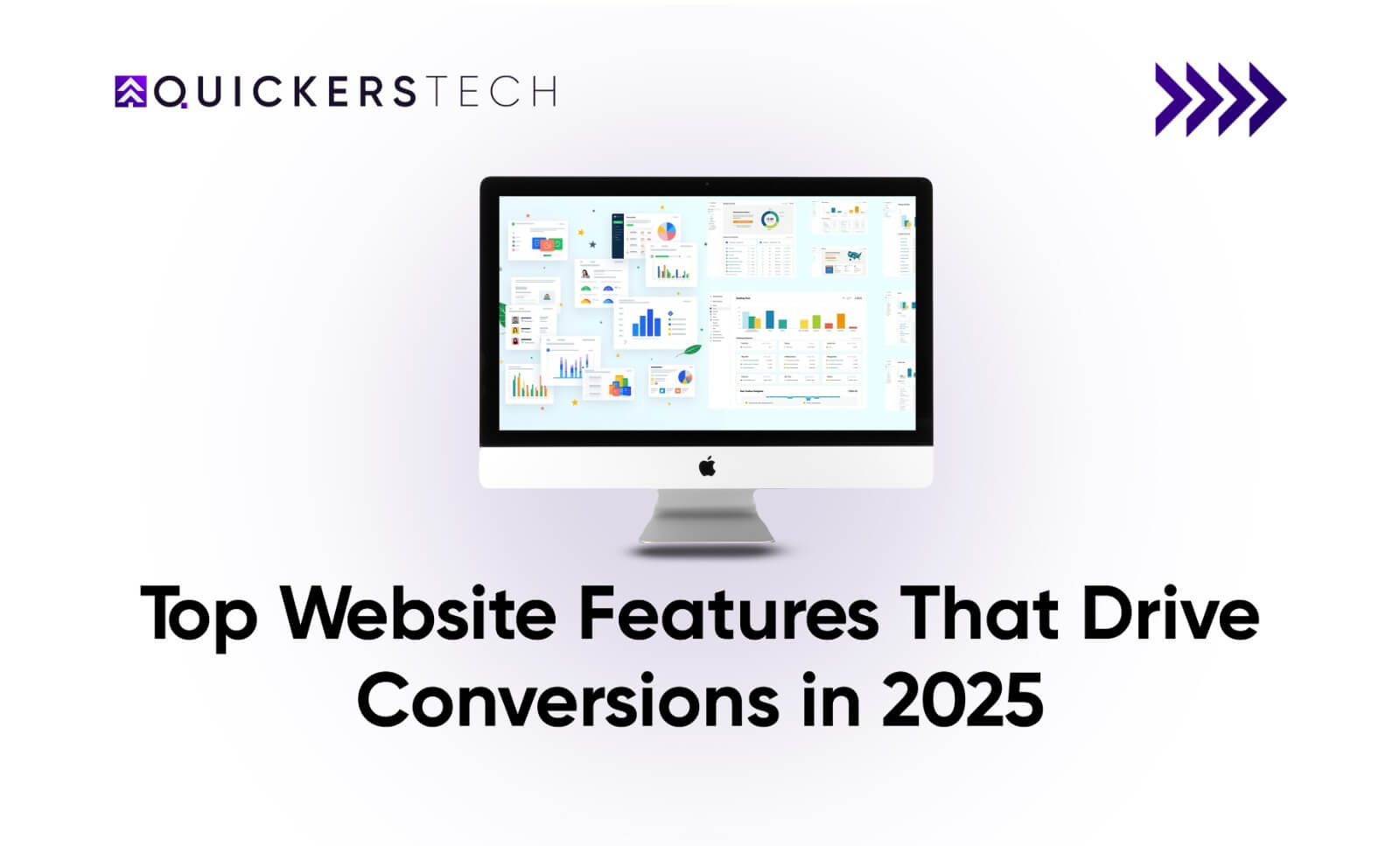Contents
- 1 What is Bespoke Website Development?
- 2 Why Do Most Websites Fail to Convert or Scale?
- 3 How bespoke website development helps different business types
- 4 What Features Should a Great Bespoke Website Include?
- 5 How Much Does Bespoke Website Development Cost?
- 6 How Does the Development Process Work?
- 7 Can I Update a Bespoke Website Myself?
- 8 Is Switching from a Template to Bespoke Worth it?
- 9 Template Website vs. Bespoke Website: What’s the Real Difference?
- 10 Frequently Asked Questions (FAQs)
- 11 Final Thoughts: Why Bespoke Website Development Is a Smart Investment
If your current website is not converting, scaling, or reflecting your brand, then it’s time to rethink your foundation. Most businesses struggle with poor mobile performance, generic designs, and frustrating limitations. That’s why many are choosing responsive website development services. They provide flexibility, speed, and a custom experience across all devices.
In this guide, we’ll look at how bespoke website development can tackle these challenges. This applies if you’re a startup launching your first product, an SME growing, or an enterprise handling complex systems. You’ll learn to create a custom website that looks great, works well, and grows with your business.
Businesses can miss out on 35% of potential revenue as a result of poor user experience.
What is Bespoke Website Development?
Bespoke website development is the process of building a custom website from scratch to match a business’s unique needs. Bespoke websites give you full control over design, features, speed, and scalability. This makes them perfect for startups, SMEs, and enterprises that want to stand out online. Unlike template websites, bespoke options allow for more customization.
It’s not just about looks. It’s about performance, control, and future-proofing your digital presence.
Why Do Most Websites Fail to Convert or Scale?
Most businesses outgrow their basic template sites within a year or two. Why? Because they were never designed for long-term performance.
Common issues:
Clunky, unresponsive mobile layouts.
Limited customization for lead generation.
Slow loading times and plugin conflicts.
Lack of integration with tools like CRMs or ERPs.
Weak SEO structure and crawlability.
With bespoke website development, you avoid these issues. You create a site that meets your needs perfectly and excludes what you don’t want.
59% of users prefer “beautiful” and “well-designed websites as opposed to simple and plain ones.
How bespoke website development helps different business types
Startups: Launch quickly and scale smart
Startups need agility, not bloated features. A custom-built MVP helps you launch faster with a site focused on user validation and clean UX.
Ideal setup:
Lightweight bespoke CMS website development.
Lean architecture with flexibility to grow.
Mobile-first layout and analytics tracking.
SMEs: Transform your site into a sales machine
As your business grows, you need a site that supports marketing, sales, and customer engagement, all while reflecting your evolving brand.
What bespoke brings:
Smarter landing pages with conversion focus.
CRM integrations and lead capture forms.
Brand-aligned UI/UX.
Speed and performance improvements.
Consider bespoke WordPress website development for flexible content management with a fully custom frontend.
Enterprises: Handle scale, security, and complexity
Enterprises need more than just a website—they need a full digital ecosystem. That means deep integrations, secure infrastructure, and a reliable user experience across platforms.
Bespoke solutions allow:
API integrations with internal systems.
Multi-user dashboards and access levels.
High security and compliance readiness.
Global reach with multilingual support.
If you’re selling online, go for bespoke ecommerce website development built for scalability.
What Features Should a Great Bespoke Website Include?
Here’s what experienced bespoke website developers should deliver:
A design fully customized to your brand
Mobile-optimized layout via responsive website development services.
Fast load times and Core Web Vitals optimization.
Custom backend or CMS.
Clean, semantic code for SEO.
Scalable structure to support growth.
Integration with third-party tools (HubSpot, Stripe, Zoho, etc.).
How Much Does Bespoke Website Development Cost?
The cost of custom website development can vary a lot. It depends on the scope, complexity, and needs of your project. Bespoke development offers custom features, better performance, and a strong base for growth. This sets it apart from template-based solutions.
Why Does Bespoke Web Development Cost More?
When you invest in bespoke development, you’re paying for more than just a nice design. You’re investing in:
Performance Optimization – Fast load times, smooth interactivity, and better Core Web Vitals.
Full Flexibility – Tailored features, seamless integrations, and unique UX.
Scalable Architecture – Future-proof structure that grows with your business.
Higher ROI – Better conversion rates, improved SEO, and stronger brand perception.
How Does the Development Process Work?
Creating a bespoke website isn’t a one-size-fits-all task. It’s a step-by-step journey that focuses on your goals. This process aims to solve real problems and provide a strong, future-ready website. Here’s how it typically works:
1. Discovery Phase
This is where everything begins. We deep-dive into your business to understand:
Your goals and objectives.
Your target audience and their behaviors.
Competitor research and industry benchmarks.
Key features, functionalities, and integrations needed.
Content strategy and brand positioning.
The output? A clear roadmap that aligns business goals with user needs.
2. UI/UX Design
Next, we move into visual planning and user journey design. This includes:
Wireframing key pages to map structure and flow.
Creating responsive, mobile-first mockups.
Designing visual elements tailored to your brand.
Crafting intuitive navigation and clear CTAs.
Reviewing and refining based on your feedback.
This ensures your site is not just beautiful, but usable and conversion-driven.
3. Custom Development
Now, the designs come to life through clean, modular code:
Frontend development: HTML, CSS, JavaScript — built from scratch, fully responsive.
Backend development: CMS or custom admin panels for easy updates.
Third-party integrations: CRMs, booking tools, APIs, payment gateways.
Performance optimization: Lightweight code, image compression, lazy loading.
The result? A fast, secure, scalable website that works on all devices and browsers.
4. Testing & Quality Assurance (QA)
We never launch without rigorous testing. This step ensures:
Cross-browser compatibility (Chrome, Safari, Firefox, Edge).
Device testing (desktop, tablet, mobile).
Page speed and load time evaluation.
Form validation, link checks, and error catching.
Accessibility and SEO audits (heading structure, alt text, metadata).
You’ll get a fully polished site with no surprises at launch.
5. Launch + Ongoing Support
Once approved, your site goes live, but we don’t stop there:
Secure deployment and live environment setup.
Final speed tests and SEO checks.
Training (if needed) to manage your CMS or admin panel.
Ongoing support and maintenance plans.
Feature upgrades and performance monitoring over time.
We make sure your site launches smoothly and keeps running well after it goes live.
Can I Update a Bespoke Website Myself?
Yes, especially when your site is built with a tailored content management system (CMS). Many businesses prefer bespoke CMS website development. It allows them to manage their website on their own. They don’t need developers for every little change.
With a custom CMS, you can:
Easily update pages, blog posts, and product listings.
Upload images, videos, and downloadable resources.
Manage SEO elements like meta titles and descriptions.
Control user permissions for different team members.
Schedule content updates or promotional banners in advance.
The interface is made for your workflow. This means no clutter or confusing options, just what your team needs to work well. You don’t need to be tech-savvy. You can keep your site fresh, relevant, and optimized.
A custom CMS lets you publish weekly blogs, run seasonal campaigns, and change product prices easily. You have full control and no hassle.
The web design industry boasts a market share of $43.5 billion[ez-toc] in the U.S. alone, which translates to intense competition and constant innovation.
Is Switching from a Template to Bespoke Worth it?
If you’re frustrated with:
Slow speed
Poor conversions
Limited flexibility
Outdated design
Then yes, making the move is absolutely worth it. Bespoke websites are an investment that delivers better UX, SEO, and business results over time.
Template Website vs. Bespoke Website: What’s the Real Difference?
| Feature / Criteria | Template Website | Bespoke Website Development |
|---|---|---|
| Design Flexibility | Limited to theme structure | 100% custom design tailored to your brand |
| Performance & Speed | Often bloated with unused code | Optimized for speed and Core Web Vitals |
| Mobile Responsiveness | May require extra tweaks | Built mobile-first for every screen size |
| Scalability | Hard to expand without rebuilding | Easily scalable and modular |
| Integrations (CRM, APIs, etc.) | Limited or plugin-based | Fully customizable and deep integrations |
| SEO Optimization | Basic settings only | Custom structure, semantic markup, schema |
| Security & Stability | Vulnerable to plugin conflicts | Secure, streamlined, minimal dependencies |
| Long-Term Cost | Low upfront, high long-term costs | Higher upfront, better ROI over time |
| Admin/User Control | Generic CMS interface | Custom CMS tailored to your workflow |
| Support for Business Growth | Not future-ready | Built to grow with your goals |
Frequently Asked Questions (FAQs)
Q1. What is the difference between bespoke and custom website development?
While both terms refer to tailored solutions, “bespoke” usually means it’s built entirely from scratch, without relying on themes or frameworks.
Q2. Is bespoke website development suitable for small businesses?
Yes. SMEs often benefit the most as bespoke websites allow them to scale, convert, and grow without being tied to limited templates.
Q3. How long does it take to develop a bespoke website?
Anywhere from 3–16 weeks depending on complexity. MVPs are faster, while enterprise-level builds require detailed planning and testing.
Q4. Can I manage a bespoke site on my own?
Absolutely. If it includes a custom CMS, you’ll be able to manage your content and media without technical help.
Q5. Are bespoke websites good for SEO?
Yes. They allow for clean code, proper heading structures, fast loading times, and schema, making them highly SEO-friendly.
Final Thoughts: Why Bespoke Website Development Is a Smart Investment
Don’t let pre-made templates hold your business back. Off-the-shelf solutions seem easy to use, but they often lack the flexibility, performance, and customisation that growing businesses need. Your website should be more than a digital presence. It needs to be a tool that actively supports your marketing, sales, and operational goals.
A custom-built website is a valuable digital asset. When it’s well-designed, expertly developed, and tailored to your unique goals, it truly shines. It’s tailored to your users, aligns with your brand identity, and adapts as your business evolves.
Whether you’re a startup with your first MVP, an SME aiming to boost conversions, or an enterprise needing strong security and deep integrations, bespoke website development offers you a competitive edge.
It’s not just about having a website that looks great. It’s about creating a platform that works perfectly, grows easily, and shows your business’s true potential.
In a competitive digital world, standing out is key. Your website must never feel like a compromise. Investing in custom development leads to long-term growth, improved user experience, and strong digital resilience.
Ready to create a high-performance custom site?
Let’s build your future-proof digital presence with responsive website development services that adapt, perform, and convert on every device.












